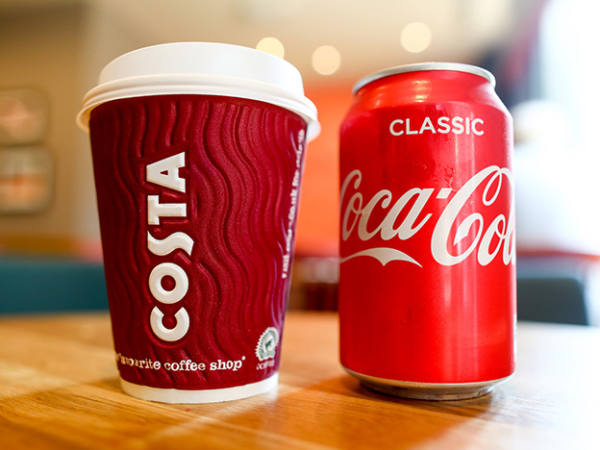This column is intended to help improve investors’ investing skills, providing commentary on markets and specific situations which might help people make money. At the Value Investor Conference in London in May, there were a number of good ideas and I wanted to share one here, adding in my tuppence worth to the presenter’s analysis. Scotts Miracle-Gro (US:SMG) was a new stock to me, so I shall describe some of the steps I conduct when looking at a new company.
It was recommended by my friend Jonathan Boyar, of Boyar Asset Management, who has a good track record at identifying hidden value.
Scotts’ generic description, which I have basically taken from the Sentieo platform, is: The Scotts Miracle-Gro Company (ticker SMG) is a manufacturer, marketer, and seller of branded consumer lawn and garden products, as well as indoor and hydroponic growing products. The company operates through three segments.
The consumer segment (65 per cent of sales) consists of the company's consumer lawn and garden business located in the geographic United States which owns a number of well-regarded brands, including Scotts and Turf Builder lawn and grass seed products; Miracle-Gro soil, plant food and insecticide, and more. The Hawthorne segment (29 per cent of sales) consists of the company's indoor and hydroponic gardening business. The Other segment (6 per cent of sales) consists of the company's consumer lawn and garden business in geographies other than the United States and the company's product sales to commercial nurseries, greenhouses, and other professional customers.
Hawthorne provides services to the cannabis industry which makes it a potential candidate for a spinoff at some point, according to Boyar. As is clear from the next table, volumes spiked in the pandemic as people were at home and spent more on their gardens (sound familiar?). Historically the US consumer segment has been a low-growth business with a 0-2 per cent top-line increase and management is now targeting 2-4 per cent.
Revenue change analysis
| Revenue change analysis (%) | ||
| 2020 | 2021 | |
| Volume | 29.2 | 16.9 |
| Pricing | 1.9 | 1.5 |
| Foreign exchange rates | -0.2 | 0.8 |
| Net sales | 30.9 | 19.2 |
The reason the stock attracted Boyar’s interest is that the shares had fallen significantly. Since his presentation, there has been a profit warning and they have fallen further.
To put this performance into context, the shares started to accelerate in 2019, as can be seen more clearly from the longer-term chart.
Both share price charts offer one simple conclusion – the stock went up a lot and then gave it back. Boyar feels that the change in the pandemic – people spending more time at home and in their garden – will be enduring. In the meantime the stock has given back most of the gains.
At this point, if I were still a hedge fund investor, I would have stopped looking at the stock, as it seems unlikely to offer the type of special situation appreciation that I was seeking. I wouldn’t disagree with Jonathan that people were going to spend a bit more time in, and more money on, their gardens, but is that sufficient to move the needle? The retracement of forecasts suggests it may not be.
|There has also been significant retracement in both 2022 and 2023 estimates. Some of the damage in 2022 is attributable to the weather which is almost always a one-year impact. The 2022 EPS estimates have gone from 6.60 in mid-2020 to 9.60 in mid-2021 and are now back where they started. The estimates for 2023 have gone from 10.00 to 6.00, a punchy 40 per cent drop which explains why the share price has more than halved. Before looking at the valuation, let me run through Jonathan’s thesis.
The company saw good growth in the pandemic and it estimates that over 20mn new customers entered the category during the pandemic. Its surveys suggest that 86 per cent intend to stay, with over half intending to spend more.
Jonathan explained the then 59 per cent fall in the stock price as a combination of concerns about
- Increased capital investment
- Gross margin pressure
- Capital allocation uncertainty
- Poor performance of Hawthorne due to cannabis oversupply issues
- Difficult comparisons
- Poor weather resulting in a slow start to the 2022 gardening season
Jonathan is bullish on capital allocation with the CEO and family owning 26 per cent of the company and having a good record in paying special dividends and buying back shares – there is also a generous quarterly yield. He also sees significant upside in the cannabis market where they have the number one brand in their category.
| Boyar intrinsic valuation of Scotts | ||
| Value ($mn unless stated) | ||
| US consumer @ 14 x 2024E Ebita | 10,981 | |
| Hawthorne @ 15 x 2024E Ebita | 4,000 | |
| Other @10 x 2024E Ebita | 219 | |
| Corporate expense @8 x 2024E amount | -1,602 | |
| 2024E net debt (average amount) | -2,050 | |
| Equity value | 11,548 | |
| 2024E shares outstanding (mn) | 59.9 | |
| Estimate of intrinsic value (per share) | 192 | |
| Implied upside to intrinsic value estimate | 87% | |
| Source: Boyar Research |
The shares are now lower and hence his upside greater. As I write this with the stock at $77 (£92.25), the upside to his target is 149 per cent. That looks a little ambitious. I disagree with some of the elements in his intrinsic valuation, so let’s go through that and then look at some conventional multiples.
First point to note is that he is using 2024 estimates as the basis for his valuation. There is nothing wrong with that, but to get to an intrinsic value estimate today, I would prefer to include a discount to reflect the time value of money. We are in mid-2022, so I would generally use a 2023 estimate unless there was a specific reason for using 2024.
He is using a multiple of eight times for corporate expense. I prefer to use the same multiple as for the individual businesses in aggregate. In my adjusted table, I have backed out the average Ebitda as being 14.2 times, which brings the valuation down by just over $1bn and I believe this is the more appropriate multiple to use. I imagine that they use the same multiple for corporate expense across all groups and that the multiple is lower as they feel there is more scope for cost-cutting, especially if there is a potential acquisition, which would be a fair treatment.
Adjusting Boyar Valuation
| Calculated values | Multiple | Ebitda ($mn) | Value ($mn) |
| x | $mn | $mn | |
| US consumer | 14 | 784.4 | 10,981 |
| Hawthorne | 15 | 266.7 | 4,000 |
| Other | 10 | 21.9 | 219 |
| Corporate expense | 8 | -200.25 | -1,602 |
| Revalued | 14.2 | -200.25 | -2,837 |
| Average net debt 2024 | -2,050 | ||
| Sum | 10,313 | ||
| Source: Behind the Balance Sheet |
The company has 55.4m shares in issue and the Boyar number is slightly higher which presumably accounts for potential dilution from share options, etc, which is the correct approach if you are:
1) using 2024 forecasts and
2) looking at potential takeout multiples.
I would generally construct the valuation using nearer-term metrics and then perhaps construct an upside scenario using the later forecasts and acquisition multiples and factor this in as an acquisition scenario – that might be my bull case. Sometimes, if the bull case rests for example on a change in profitability driven by an external factor, that can be even higher – the profit change AND an acquisition is more of a blue-sky scenario and I tend to avoid relying on those.
To put the Boyar valuation into context, here is the chart of the EV/EBITDA multiple over time.
Its five-year average is around 13x (13.4x or 12.9x ex the Covid-related jump in H1 2020). If you put the Boyar 2024 estimates on 13x, that reduces their target to $9.3bn and still gives a target of $155/share, or twice the current share price. Sentieo has a consensus 2023 EBITDA of $670m. On 13 times, that gives
- an EV of $8.7bn
- less debt of just over $2bn at last year end
- A target price of $120, or still over 50 per cent upside.
Sentieo has a big increase in the net debt which is inconsistent with the Boyar data above which appears to factor in the historical level. There is a seasonal outflow which suggests that it would be more appropriate to take an average net debt in the calculation.
I think this warrants further work, particularly on the nature of cost inflation in the materials inputs (oil inputs to chemicals and packaging for example). The stock needs to be monitored for further downgrades, but it’s one I am putting on my watch list.














